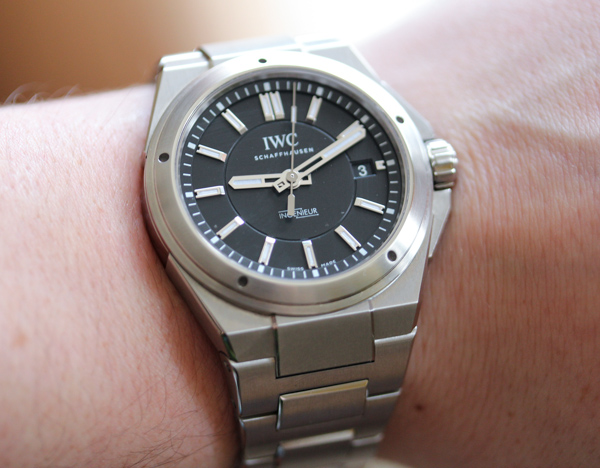
At SIHH this past January, IWC released their new Ingenieur collection, featuring over a dozen new timepieces from the revamped line. While most press attention from the collection focused on the in-house calibers, casing materials and range of complications in the new 46mm models, I was personally won over by the smallest and simplest of the bunch – the new 40mm steel automatic “base model”, reference 3239.
Unlike the previous iterations it replaces, the 2013 Ingenieur Automatic is the most honest return to the styling of the original Gérald Genta masterpiece, the 1976 Ingenieur SL. Genta is of course known primarily for his work on a few other 70s timekeeping icons, namely the Audemars Piguet Royal Oak (released in 1972) and the Patek Philippe Nautilus (also released in 1976). Of this trifecta, the Ingenieur was the most coolly received, and sales were slow for IWC, with rumors of under a thousand pieces sold in the first eight years of production.
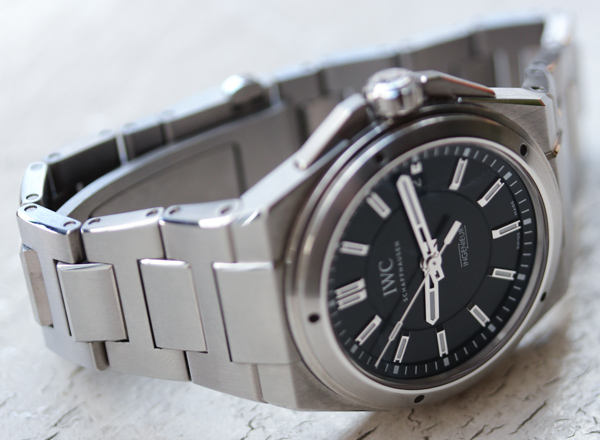
This was perhaps due to the heft of the original SL, which was thicker and heavier than his designs for the Royal Oak and Nautilus. This was of course due to the fact that the Ingenieur was designed primarily as an anti-magnetic tool watch and may not have been as popular with buyers looking for slimmer sport-luxury pieces. Of course, all three pieces were launched in the midst of the quartz crisis, and the fact that they survived and remain appealing and collectable today is a testament to their lasting design appeal above all.
The new 3239 is offered with three dial variations, including two silver-plated versions (one with steel hands and markers, the other with rose gold), and one with a classically inspired black dial. While all three versions are impressive to behold, the black dial struck me as the sportiest of the collection, as well as the most traditional, so I selected it for this review.
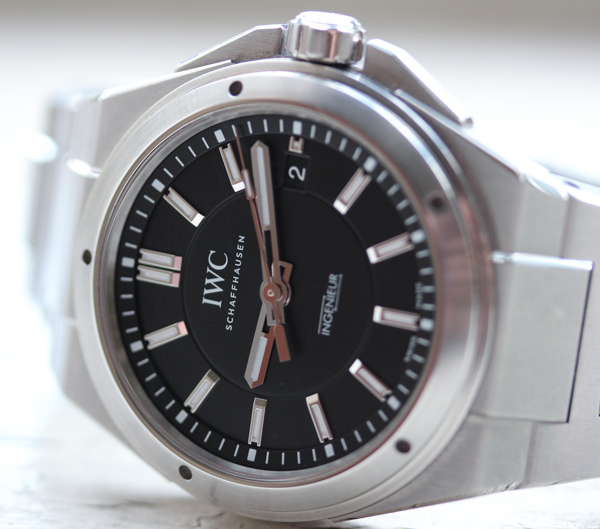
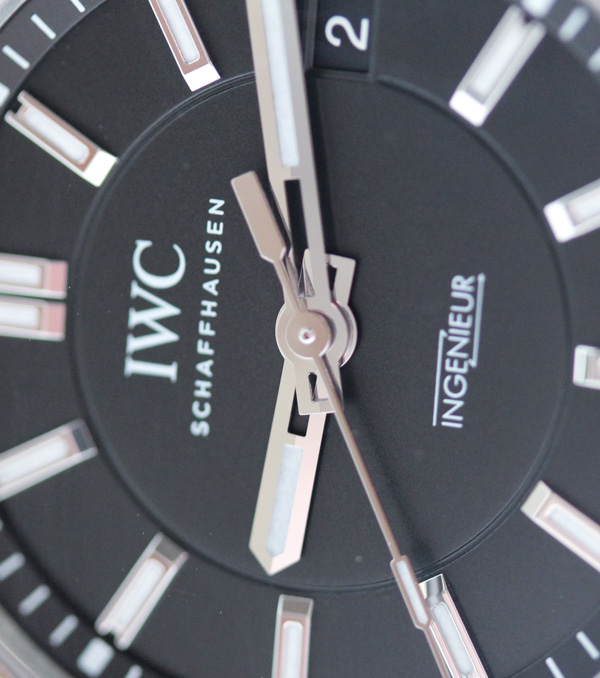
Like its predecessors, the 2013 model carries roughly the same case dimensions and the iconic integrated bracelet design. The piece has a diameter of 40mm and a 10mm thickness. It features a round steel bezel with five screws oriented in a pentagon layout around the dial, a hallmark of the Ingenieur line. The only true departure from the original in terms of case design is the addition of triangular crown protectors on the right side of the case (the SL had no protectors).
The glossy dial is executed masterfully with a design of three concentric rings, adding texture and depth not seen in previous versions. The outermost ring features chapter markers, the middle with polished luminescent hour markers, and the central with the classic “Ingenieur” script and brand logo. The polished, solid steel luminescent hands have been modernized with a partially open design. The crystal is sapphire and has an anti-reflective coating.
The integrated steel bracelet is likewise an homage to the original, featuring brushed H-shaped links with rectangular centers. The deployment clasp is engraved IWC, and features release pushers on the sides, an improvement over other mechanisms on integrated bracelet designs (I’m calling you out, Royal Oak).
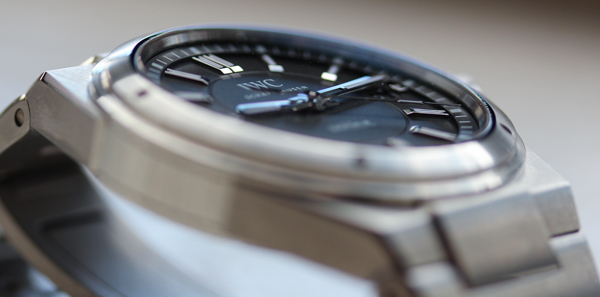
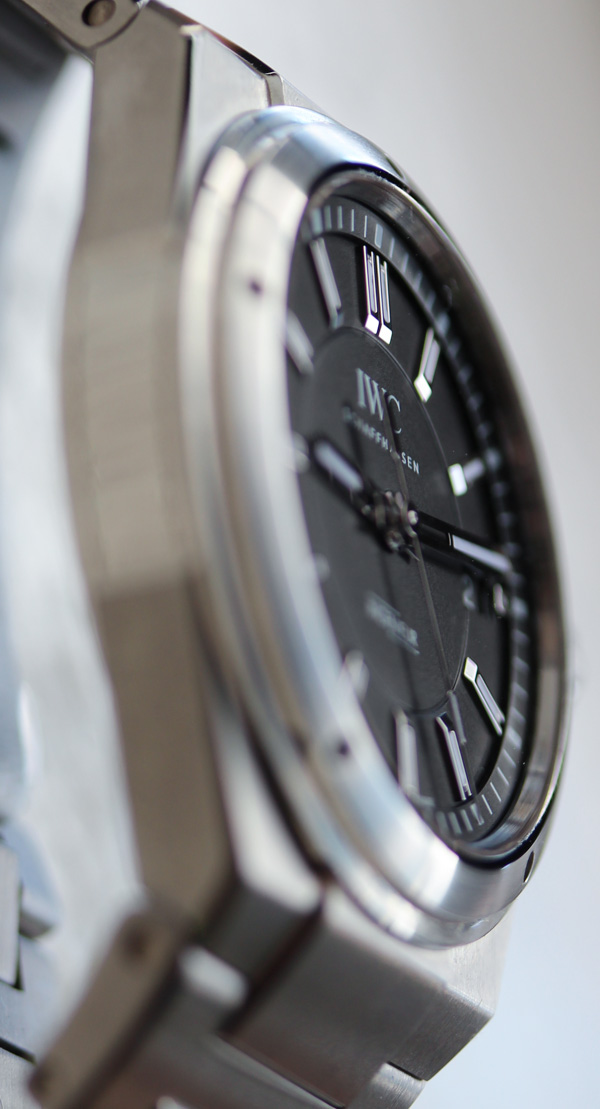
Unlike many sports watches on the market today, IWC’s designers restrained themselves on the case back, which is solid steel rather than the seemingly ubiquitous display back. Anyone who has read my previous reviews knows that I am not a fan of display backs on anything but the most exceptional of manufacture movements, so I was happy not to have any reason to complain here!
Protecting the movement inside the case is an anti-magnetic cage, which gives the Ingenieur a resistance of 40,000 amperes per meter. Interestingly, this is the only model in the entire Ingenieur range to be anti-magnetic. This is surprising as the original Ingenieur was designed from the beginning to be an engineer’s watch, good for environments with strong magnetic fields.
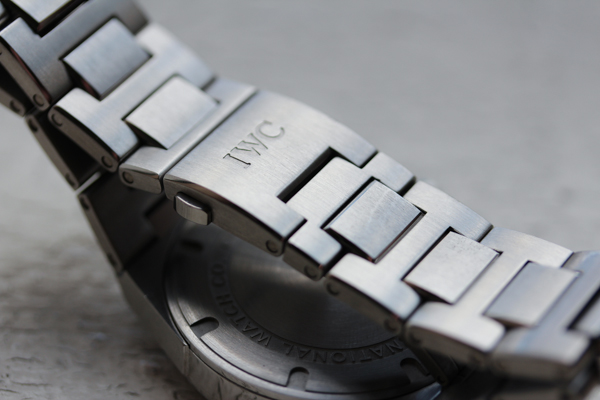
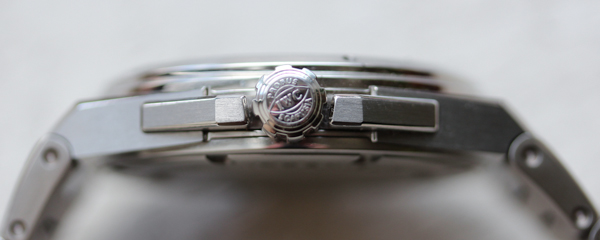
Which brings me to the movement. Unlike the larger 46mm models from the new collection, the 3239 utilizes the IWC calibre 30110, which is a modified ETA 2892, stated by IWC to be a base Sellita. This is a proven, robust tool watch movement with a 42 hour reserve that is easily serviceable and very reliable. Although pedestrian when compared to their new in-house calibres, I am personally not put off by the choice. The 2892 serves its purpose well and keeps the price reasonable. And with IWC’s incredible (and deserved) popularity, I doubt it will dissuade most buyers. Furthermore, I am certain that IWC will develop in-house movements to fit smaller pieces in the coming years, as IWC (and parent company Richemont) move away from third party suppliers completely.
Thanks to our friends at IWC, I was fortunate to get my hands on one of the very first pieces available to review in the USA. As I attended events with it over the past few weeks, it received plenty of attention from fellow watch journos and enthusiasts alike. The design was universally praised– and most agreed that it was the highlight of the new Ingenieur collection. Although the price/movement debate came up frequently, most agreed that the value proposition weighed heavily in its favor. I know I don’t speak for just myself when I say we’d all love to see a version with an in-house movement in the near future, but are scared of what the price tag might look like on one. Right now this is the only “re-edition” 70’s Genta masterpiece available new for under (and in this case, well under) $15K, making it a real bargain.
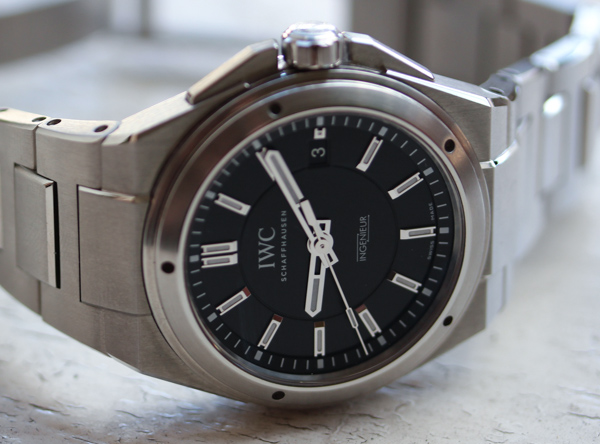
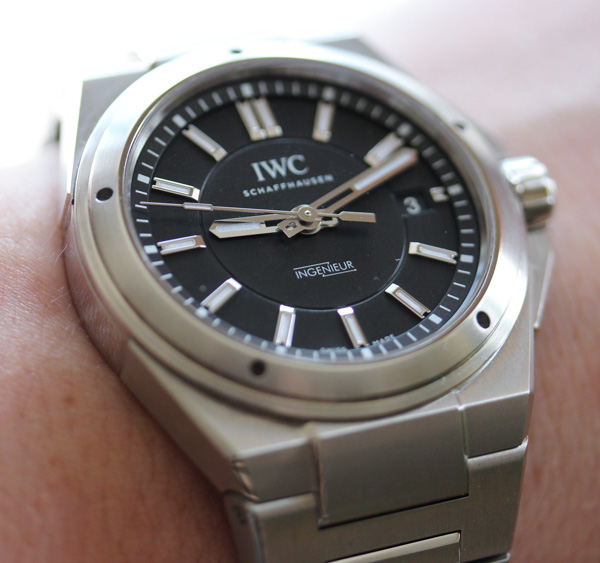
Despite its value, the biggest appeal of the new 3239 Ingenieur for me is entirely in its design. As a fan of Genta’s classic design language, I am impressed with the sincerity of this homage. Modern flourishes in the dial and hands do not detract from the vintage styling, and the piece wears very comfortably on the wrist. As with everything IWC is putting out, the fit and finish are spectacular. Ultimately this is a winner of a timepiece, and a proper successor to the classic Ingenieur SL. Price is $6,600. iwc.com
Necessary Data
>Brand: IWC – International Watch Company
>Model: Ingenieur Automatic 3239 40mm Steel
>Price: $6,600
>Would reviewer personally wear it: Yes
>Friend we’d recommend it to first: Our buddy in need of a daily wearer with some retro-awesome 70s Genta design.
>Worst characteristic of watch: Would love to see the case a few millimeters thinner.
>Best characteristic of watch: Case design. Honest and pure homage to the original without being a carbon copy.
